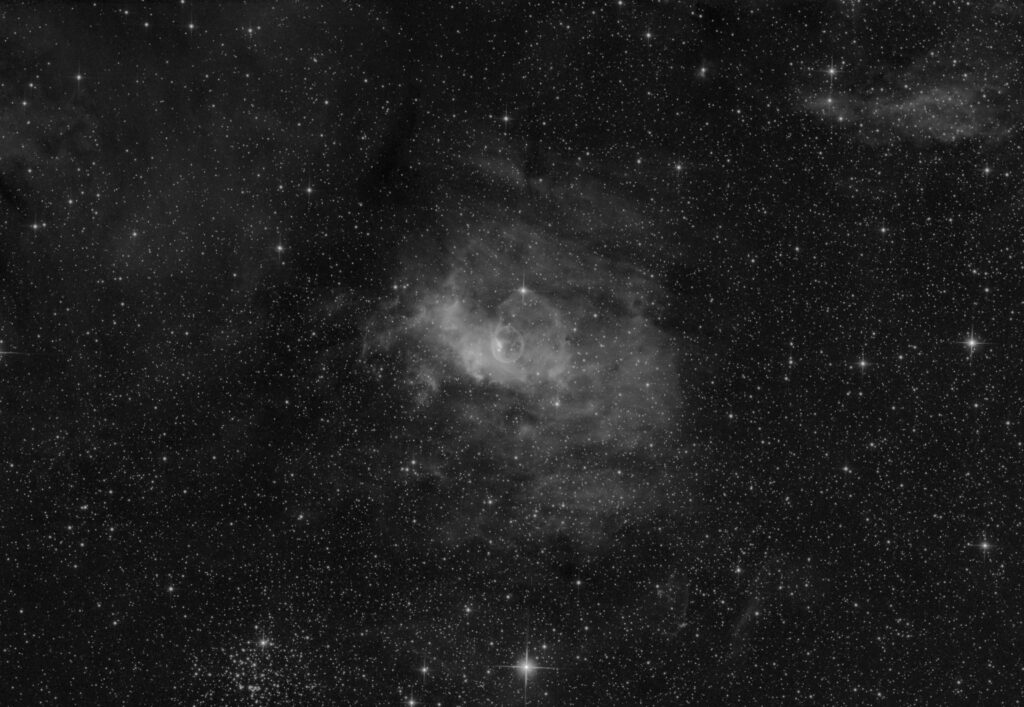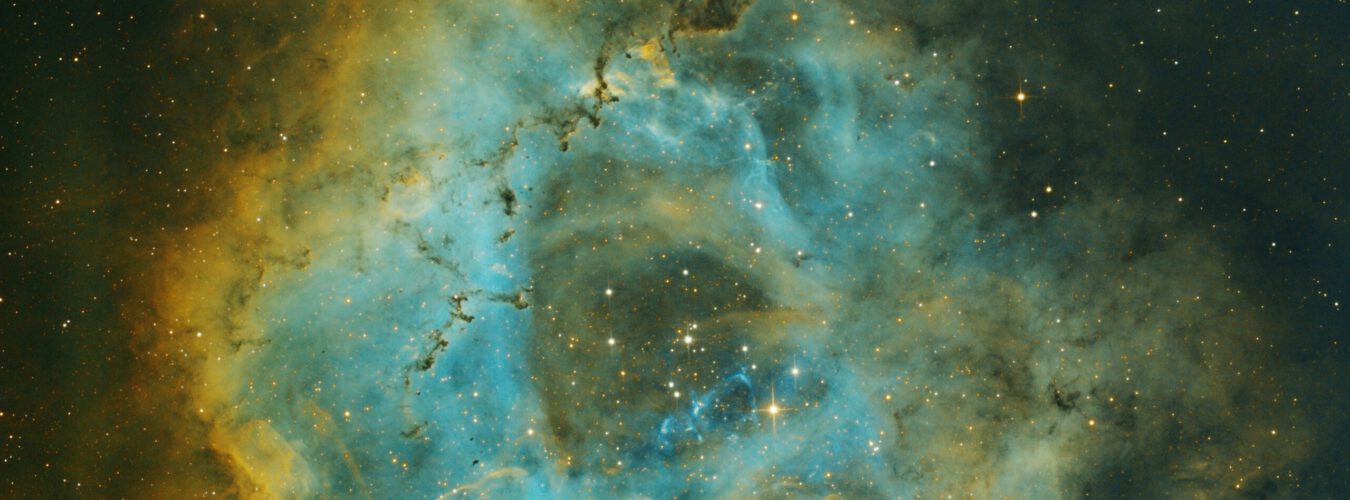Nova V1405 Cassiopeia was discovered on march 18th of 2021, near the bubble nebula.
Along with other amateurs who submit their photometry to the AAVSO (American Assiociation of Variable Star Observers), I have been following this Nova. Below you find the lightcurve from the AAVSO until now (23-5-2022). Generally a nova flares up and gradually fades away. This nova has flared up several times more in the course of 2021.
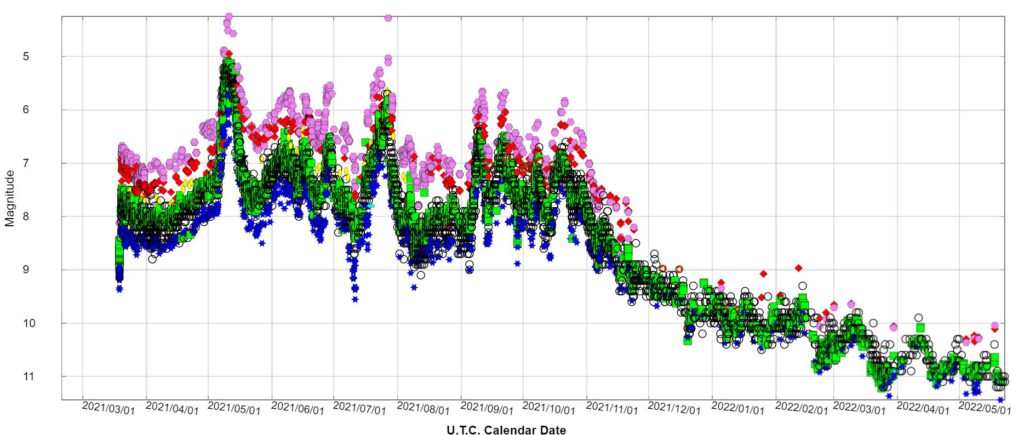
I first took a spectrum of this nova on the 23rd of march 202. That was with with the star analyzer close tot the camera sensor (32mm), so that resulted in low dispersion (14 Angstrom/pixel).
At the end of july it had flared up agian and I had another go at it. This time with the star analyzer grating much further from the camera sensor (104mm). That much dispersion with this grating gives more resulotion, but on the down side it also needs more exposure time as the light is spread out more.
Though it worked. With the higher resolution of 22-07-2021 the P-Cygni profiles in front of the emmision lines become abvious. a P-Cygni profile is an emission line with an absorption dip in front of it, at the blue end of the spectrum. This is caused by material in the expanding shell of the nova comming towards us and absorbing light at a blueshifted wavelength. With the amount of blue shift between the emission line and the absoription feature in front of it, the expansion speed of the shell of the nova can be calculated.
In this case at 22-07-2022 I measured the expansion speed at approximately 1.300 km/s. For that I used the Hydrogen Balmer lines (H,alpha through H,epsilon) and the Helium line at 5.015 angstrom.
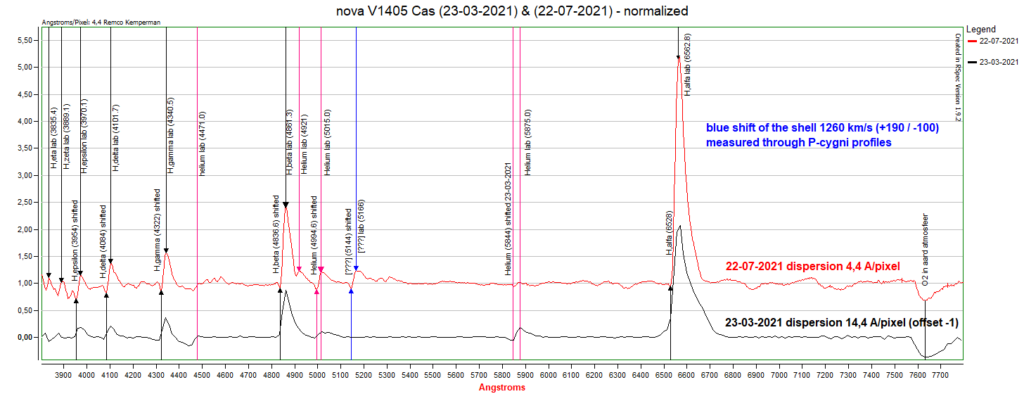
In september 2021 the nova had flared up again and I had another go at it on the 25th of september. This time with the same higher dispersion as in July. The spectra below are those of september 25th (red) and july 22nd (blue).
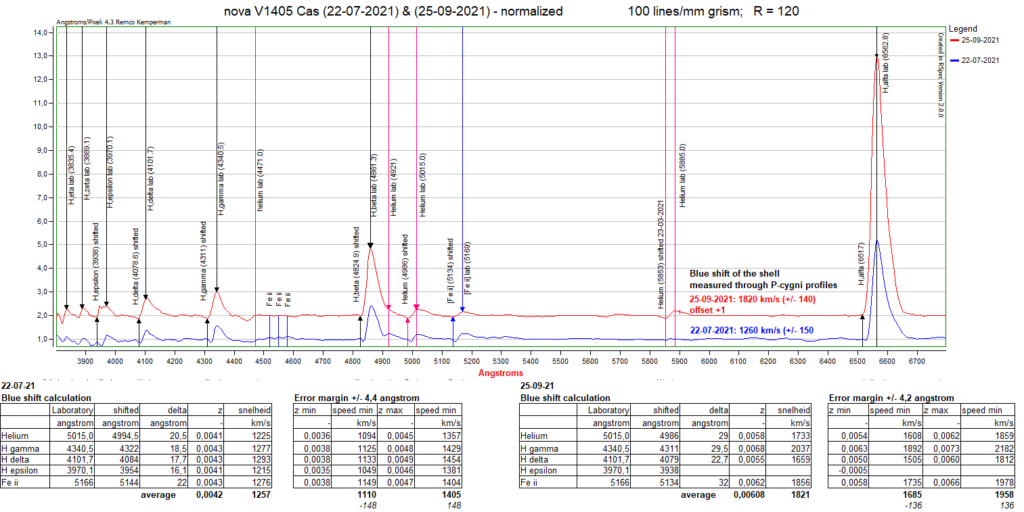
As compared to July the Hydrogen emission lines in the nova had gotten brighter in September. The blue shift, as measured through the P-Cygni profiles had also increased. This time I measured it at approximately 1.900 km/s.
There was also a difference in the other emission lines. In july a few Iron lines (Fe) showed up between 4.500 and 4.600 Angstrom. I did not detect those in september.
After september I did not have another go at this nova. It is now (may 2022) fading away further, and to dim to get a spectrum with my equipment.
